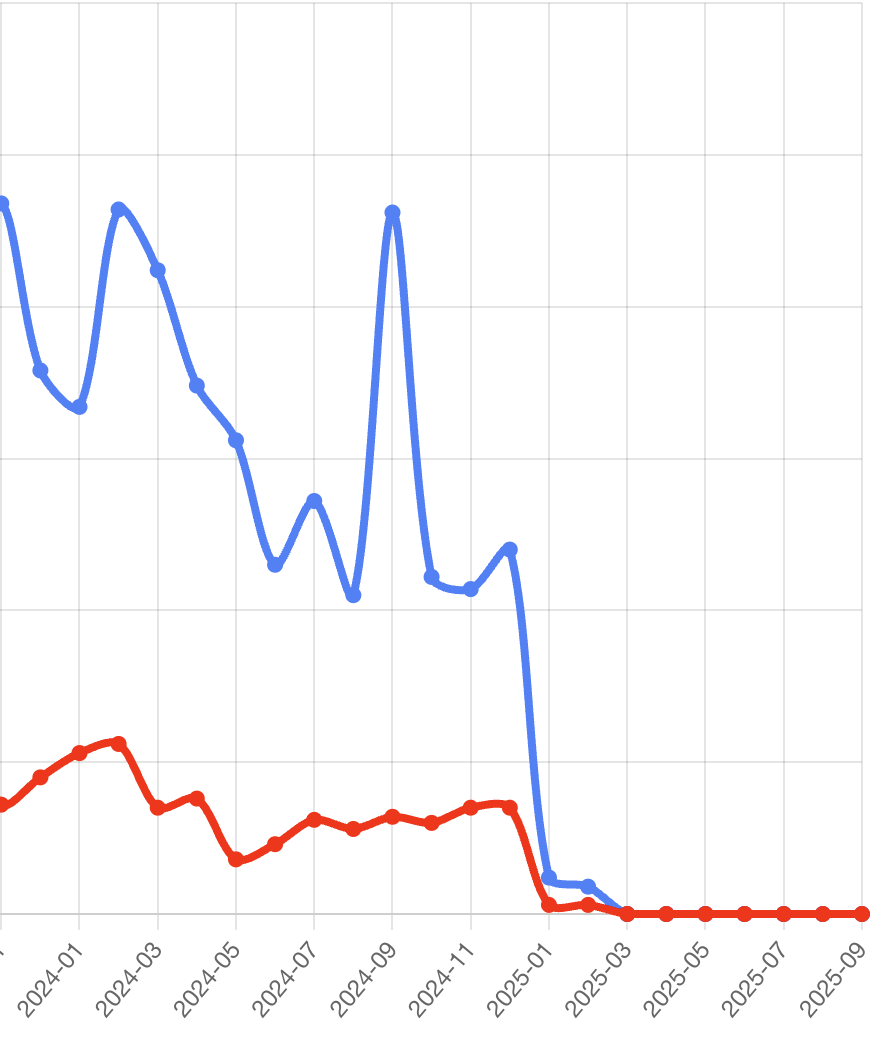A weekend of energy abundance
02 September, 2025 - Gilbert West
Well that was a blashy weekend, with pretty solid wind speeds all the way through to Tuesday morning. Scotland's grids sat mostly at zero emissions with the occasional 2gm/kWh blip in the South. South Scotland broke its zero emissions record again and Octopus Energy had free electricity sessions on Sunday and Monday afternoon. Whether you're motivated by zero cost or zero emissions electricity, this was a great weekend. As I'm fond of saying, 'Why not both?'
It’s been quite a year. I covered the impact of March’s drought in an earlier article, but the continued impact is quite stark. This snapshot of the hydro chart shows the continued absence of hydro electricity which started in February.

This has meant that wind makes up a much higher proportion of electricity generated in North Scotland, but that's partly due to the loss of hydro. North Scotland will still probably get to around 200 full days of zero emissions electricity, but that is down from last year's 236. The tandem combination of wind and hydro enables these high zero emissions figures so the loss of hydro is clear.
South of Scotland has shown improvement on last year's figures, but it's due to an increase in the role that nuclear has played this year. I have a complicated relationship with nuclear, but the remaining fleet is due to be decommissioned and I'd be OK with it hanging around until we have more solar and storage in place. Let's not shoot ourselves in the Swiss/German foot.
South Scotland
South Scotland is currently the lowest carbon intensity area of the GB grid at 23.4 gms/kWh. This is an improvement over last year and almost a fifth of GB's average which hovers in the low 100s. Along with this slow but steady improvement, South also doubled its previous number of whole days with zero emissions, going from 4 in 2021 to 8 so far this year. North still leads the way on this with over 125 full days of zero emissions so far this year. Despite that huge number of zero emission days the average emissions so far this year have spiked to around 55 gms / kWh highlighting the complexity of low carbon electricity production.
Increases in share of electricity generation (South)
- Nuclear has increased from 27.3% to 34.8%
- Solar has more than doubled from 1.4% to 3.1% (that'll go down by end of year)
Decreases in share of electricity generation (South)
- Wind currently is down from 56.7% to 51.9%
- Gas continues to fall from 5.2% to 3.7%
- Hydro has fallen off the cliff dropping from 3.4% to 0.1%
North Scotland
Increases in share of electricity generation (North)
- Wind has leapt from 74.7% to 84%
- Gas is up from 7.5% to 12.4%
- Nuclear is slightly up from 1.6% to 2.3%
- Solar is up from 0.1% to 0.3%
Decreases in share of electricity generation (North)
- Hydro has plummeted from 15.5% to 0.2%
Predictions for North Scotland's days of zero emissions.
Last year's impressive 236 full days of zero emissions will not be beaten this year. North Scotland may even struggle to improve on it's annual average emissions.
Here are the numbers as of today (2 September):
- 125 full days to date ( versus 170 at the same point last year )
- 245 the theoretical maximum based on days left
- 203 my prediction based on a mid 60% average zero emission time in a year
- 227 a wildly optimistic prediction based on around 80% average zero emission time in a year
Of course, what really matters isn't the zero emissions time, but the amount of time in the low and very low emission zones.
That's something I'm going to introduce to the charts along with scorecards for all the grid areas in the GB grid.